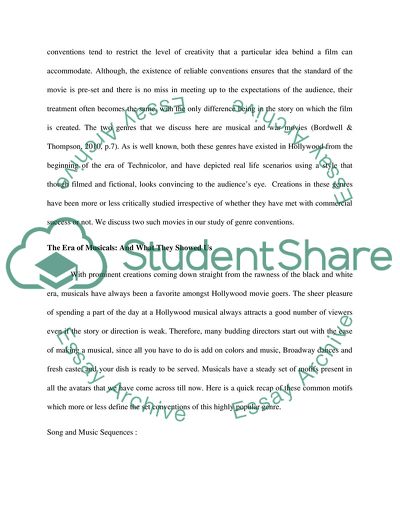Cite this document
(Are Genre Conventions Possibilities or Constraints: A Study Essay Example | Topics and Well Written Essays - 3000 words, n.d.)
Are Genre Conventions Possibilities or Constraints: A Study Essay Example | Topics and Well Written Essays - 3000 words. https://studentshare.org/visual-arts-film-studies/1827157-should-we-think-of-genre-conventions-as-a-set-of-possibilities-for-filmmakers-or-as-a-set-of-constraints-make-detailed-reference-to-two-genres-and-at-least-two-american-films-in-your-answer
Are Genre Conventions Possibilities or Constraints: A Study Essay Example | Topics and Well Written Essays - 3000 words. https://studentshare.org/visual-arts-film-studies/1827157-should-we-think-of-genre-conventions-as-a-set-of-possibilities-for-filmmakers-or-as-a-set-of-constraints-make-detailed-reference-to-two-genres-and-at-least-two-american-films-in-your-answer
(Are Genre Conventions Possibilities or Constraints: A Study Essay Example | Topics and Well Written Essays - 3000 Words)
Are Genre Conventions Possibilities or Constraints: A Study Essay Example | Topics and Well Written Essays - 3000 Words. https://studentshare.org/visual-arts-film-studies/1827157-should-we-think-of-genre-conventions-as-a-set-of-possibilities-for-filmmakers-or-as-a-set-of-constraints-make-detailed-reference-to-two-genres-and-at-least-two-american-films-in-your-answer.
Are Genre Conventions Possibilities or Constraints: A Study Essay Example | Topics and Well Written Essays - 3000 Words. https://studentshare.org/visual-arts-film-studies/1827157-should-we-think-of-genre-conventions-as-a-set-of-possibilities-for-filmmakers-or-as-a-set-of-constraints-make-detailed-reference-to-two-genres-and-at-least-two-american-films-in-your-answer.
“Are Genre Conventions Possibilities or Constraints: A Study Essay Example | Topics and Well Written Essays - 3000 Words”. https://studentshare.org/visual-arts-film-studies/1827157-should-we-think-of-genre-conventions-as-a-set-of-possibilities-for-filmmakers-or-as-a-set-of-constraints-make-detailed-reference-to-two-genres-and-at-least-two-american-films-in-your-answer.


